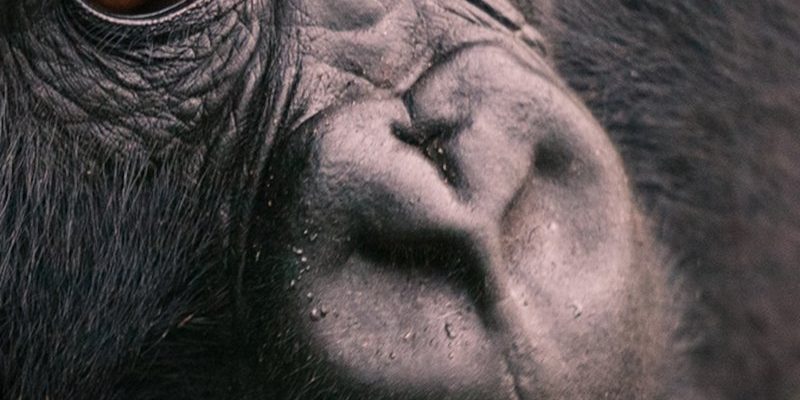![Comparing The Western Gorilla Vs. [Similar Species]](https://gudri.com/wp-content/uploads/2025/06/Comparing_The_Western_Gorilla_Vs___Similar_Species__image_0.jpg)
These two gorilla species share a common ancestor, yet they have evolved in unique environments and under distinct circumstances. The Western Gorilla roams the dense forests of Western Africa, while the Eastern Gorilla can be found in the mountainous regions of Central Africa. It’s fascinating how their habitats influence their behavior, diet, and social structures. So, as we sip our coffee, let’s explore these incredible animals and find out what sets them apart.
Habitat and Distribution
The habitat of the Western Gorilla is primarily located in the lowland rainforests of countries like Cameroon, the Central African Republic, and the Republic of the Congo. This region is characterized by dense vegetation that provides plenty of food sources. Western Gorillas thrive here, often seen munching on leaves, fruit, and flowers.
In contrast, the Eastern Gorilla predominantly resides in the mountainous forests of Rwanda, Uganda, and the Democratic Republic of the Congo. These gorillas prefer higher altitudes where the temperature is cooler and the vegetation is more diverse. This unique environment means they often have a different diet; for instance, they tend to eat more bamboo and fibrous plants compared to their Western counterparts.
You might be wondering how these differences in habitat affect their lifestyles. For starters, Western Gorillas have adapted to a flatter terrain, which makes moving through their environment relatively easier. Eastern Gorillas, on the other hand, have strong arms and legs that support climbing steep slopes and navigating rocky landscapes.
Physical Characteristics
Now, let’s talk about looks. Both gorilla species share some common traits, such as robust bodies and distinctive facial features. However, if you take a closer look, you’ll notice some significant differences.
Western Gorillas are smaller than their Eastern relatives, weighing between 220 to 440 pounds. They have a more lean appearance with slightly longer arms relative to their bodies. Meanwhile, Eastern Gorillas, especially the Mountain Gorilla subspecies, can weigh as much as 485 pounds and are known for their thick fur that helps them withstand cooler climates.
When it comes to color, Western Gorillas often have a grayish-brown coat, while Eastern Gorillas may appear darker, and their fur can have a more lustrous sheen. This distinction is not just for looks—it plays a role in camouflage within their respective habitats.
Social Structure and Behavior
Honestly, the way these gorillas form social groups is quite intriguing and varies between species. Western Gorillas typically organize themselves into smaller family groups, usually comprising a dominant male, several females, and their offspring. This structure allows for flexibility and supports nurturing environments for the younger gorillas.
On the flip side, Eastern Gorillas often form larger groups. These groups can number over 20 individuals and are usually led by a dominant silverback male. This silverback not only protects the troop but also helps maintain social order. If you think about it like a sports team, the silverback acts as both the coach and the captain—guiding, defending, and ensuring everyone plays their part.
Another key aspect of their behavior lies in their communication. Both species use a range of vocalizations and gestures to convey messages, from playful grunts to warning calls. However, you might find that the larger social groups of Eastern Gorillas lead to more complex interactions and vocal communications.
Diet and Feeding Habits
When it comes to food, gorillas are herbivores, but their diets can differ significantly based on their habitat and available resources. Western Gorillas primarily consume a variety of fruits, leaves, and stems. Their access to fruit-rich environments allows them to indulge in more sweet and energy-dense foods.
Eastern Gorillas, particularly Due to their mountainous habitat, tend to eat more fibrous plants. They also enjoy bamboo shoots, which are common in their environment. Although they have a more challenging diet, their ability to extract nutrients from tougher plants hints at their adaptability.
Here’s the thing: diet plays a significant role in their overall health and behavior. A Western Gorilla feasting on ripe fruit might be more playful and energetic, while an Eastern Gorilla focused on tougher vegetation might exhibit more deliberate and slower movements.
Conservation Status
Sadly, both Western and Eastern Gorillas face threats that endanger their existence. The Western Gorilla is classified as critically endangered, mainly due to habitat loss, poaching, and disease. Deforestation for agriculture and logging has severely impacted their living spaces, making it difficult for these gentle giants to thrive.
Eastern Gorillas, too, are classified as critically endangered, with their numbers dwindling due to similar threats. The Mountain Gorilla subspecies has experienced some growth thanks to conservation efforts, but challenges remain. Poaching and human encroachment continue to hinder their recovery, reminding us that we need to be proactive in protecting these incredible creatures.
Conservation organizations are working tirelessly to create awareness and implement strategies to safeguard both species. The more we understand about these gorillas, the better equipped we are to help them.
Final Thoughts on Comparing Western and Eastern Gorillas
As we wrap up our exploration of the Western Gorilla and Eastern Gorilla, it’s clear that while these amazing animals share many similarities, their differences are equally remarkable. From their habitats and physical characteristics to their social structures and diets, each species has evolved to adapt to its environment.
Understanding these distinctions not only enriches our knowledge about gorillas but also highlights the importance of conservation efforts. Protecting these magnificent creatures ensures that future generations can appreciate their beauty and complexity. So, the next time you hear about gorillas, remember the unique traits of both the Western and Eastern varieties—they’re both deserving of our attention and care.

